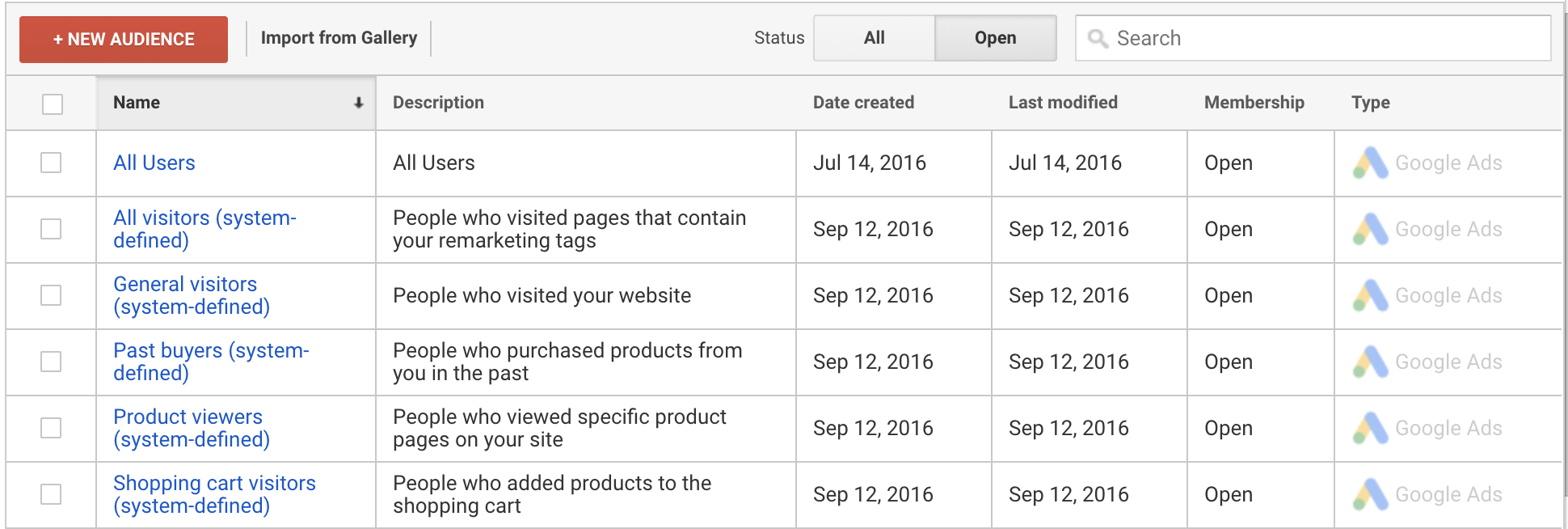Maximize Your ROI With Remarketing in Google Analytics
In the world of digital advertising and marketing, the utilization of remarketing techniques within Google Analytics has shown to be a potent tool for improving return on financial investment. By using the power of customer data and tailoring advertisements to details target market sections, organizations can considerably intensify their conversion prices. However, the real crucial depend on the art of accuracy - understanding user habits, crafting engaging advertisements, and constantly refining techniques to drive optimal outcomes. The trip to optimizing ROI via remarketing is a nuanced course paved with understandings and chances that can improve the trajectory of your advertising and marketing ventures.
Comprehending Remarketing in Google Analytics
Understanding remarketing in Google Analytics is crucial for enhancing your digital advertising and marketing approach. Remarketing permits you to target users that have actually formerly seen your internet site or interacted with your app, offering them with tailored advertisements as they surf various other sites or use other applications within the Google Present Network. This strategy aids keep your brand top of mind and urges users to go back to your website, inevitably raising the probability of conversion.
By using Google Analytics, you can track the efficiency of your remarketing projects, gaining beneficial insights into user habits, interaction, and conversions. This information enables you to fine-tune your bidding, messaging, and targeting approaches to boost the general effectiveness of your campaigns.
In addition, recognizing the different kinds of remarketing lists readily available in Google Analytics, such as common, dynamic, and similar audiences, allows you to create personalized and highly segmented projects tailored to particular individual segments. This level of granularity can significantly boost the relevance and influence of your remarketing initiatives, eventually maximizing your roi.
Establishing Remarketing Listings
To effectively execute remarketing campaigns in Google Analytics, the first action entails configuring and creating remarketing checklists targeting certain individual sections based upon their communications with your site or application. By establishing remarketing lists, you can customize your advertising initiatives to get to individuals who have actually currently revealed passion in your services or items.
To start, browse to the Admin area of your Google Analytics account and select the Residential or commercial property where you want to produce the remarketing list. After that, under the Residential or commercial property column, click on 'Target market Definitions' and pick 'Target markets.' Next off, click on the red 'New Target market' button and pick 'Produce New' to define the specifications for your remarketing list.

Crafting Effective Remarketing Advertisements

When crafting your ads, focus on producing attention-grabbing headlines and compelling visuals that stick out to prospective clients. Incorporate strong calls-to-action that urge individuals to review your site and finish a preferred action. Utilize vibrant remarketing to reveal individualized advertisements featuring product and services that customers have actually formerly viewed on your website.
Furthermore, ensure that your advertisements are mobile-friendly since a substantial section of web web traffic originates from mobile phones. Test different ad variants to recognize which messages and designs drive the best results. By constantly refining and optimizing your remarketing ads based on efficiency data, you can maximize their performance and improve your roi.
Analyzing Remarketing Performance

Through Google Analytics, online marketers can track the efficiency of their remarketing campaigns in real-time, allowing them to determine fads, patterns, and areas for enhancement promptly. By assessing the information, online marketers can establish which advertisements are performing well, which audience segments are responding positively, and which channels are driving one of the most conversions. look at this now This degree of granularity enables marketers to make data-driven decisions to maximize their remarketing campaigns for better outcomes.
Optimizing ROI With Remarketing
Analyzing remarketing information in Google Analytics allows online marketers to determine possibilities for enhancing roi (ROI) through critical modifications - What Is “Remarketing” In Google Analytics?. To make best use of ROI with remarketing, it is crucial to comprehend the actions of your target market. By analyzing customer interactions, such as the pages they saw, the items they viewed, or the actions they took on your website, you can tailor your remarketing campaigns a lot more effectively
Segmenting your audience based upon their habits permits you to develop customized and targeted advertisements that are most likely to reverberate with them. By revealing appropriate ads to details sectors of your audience, you can boost the chances of conversion and inevitably improve your ROI.
Furthermore, evaluating various ad creatives, messaging, and deals can help identify what resonates ideal with your audience. A/B screening permits you to experiment with various components of your advertisements to determine what drives the highest engagement and conversion prices.
Final Thought
Finally, making best use of ROI with remarketing in Google Analytics requires a calculated technique to analyzing user habits, segmenting target markets, developing tailored ads, and optimizing campaign efficiency. By leveraging data-driven insights and evaluating various approaches, businesses can improve their remarketing efforts to drive greater involvement and conversion prices. This organized strategy makes certain this link that sources are efficiently designated towards optimizing rois in remarketing projects.
Next, click on the red 'New Target market' button and choose 'Produce New' to specify the parameters for your remarketing listing.
By continuously refining and optimizing your remarketing advertisements based on performance data, you can maximize their efficiency and enhance your return on financial investment.
By delving into these understandings, marketers can get an extensive understanding of how their remarketing initiatives are reverberating with their target audience and driving conversions. To maximize ROI with remarketing, it is crucial to recognize the habits of your audience.In verdict, maximizing ROI with remarketing in Google Analytics requires a calculated technique to assessing user actions, segmenting audiences, developing customized advertisements, and optimizing project efficiency.